This article was published as a part of the Data Science Blogathon
In this world, Agriculture and farming are some of the oldest professions. As the population grows high, the need to grow and yield more, better crops and the best quality also increases. New technologies like Artificial Intelligence (AI) and Blockchain come in handy.
To address issues in farming such as low productivity, language barriers, and water scarcity, AI is to enable rural people to use the same resources as city dwellers. If you can’t read or write in English, an application known as a voice-based intelligence assistant will prove a milestone for these people, thanks to Alexa and Siri.
Urban communities will use creativity to explain their most pressing transportation, training, and lodging issues. Smart Agriculture, which includes vertical cultivating, bright nurseries, and IoT-enabled open field horticulture, is a growing invention for urban zones.
In this blog application of Blockchain and AI in agriculture is mentioned. ARIMA model for time series forecasting and the efforts done to solve the problems associated with farming are also covered.
Keywords: Artificial Intelligence, Cereals, Drone, Blockchain, ARIMA Model
Introduction
Artificial Intelligence, Machine Learning, Internet of Things, Cloud, Blockchain – With the approach and reception of these advancements, we are going to encounter an in- innovative transformation after the web, prevalently named as “Fourth Industrial Revolution.” The genuine capability of these new technologies is Blockchain and AI.
The data stored in blockchain information bases is jumbled. Artificial intelligence and Blockchain in the business world have a lot to offer. Many businesses are trying to figure out what they are and how to put them into practice. Establishing a Blockchain AI venture, in this scenario, demands competence and thorough investigation.
Blockchains are ideal for storing personal data, which can unlock a wealth of value and ease in our lives if prepared well. Consider intelligent medical services frameworks that make accurate decisions based on our clinical outputs and data, or even Amazon and Netflix’s proposal engines, which suggest what we might wish to buy or watch right away.
Difficulties in farming are,
1. Accessibility of water.
2. Rainstorm turnaround time.
3. Accessibility of natural compost.
4. Accessibility of transport to ship the produce/reap.
5. Accessibility of production capacity.
6. Market value variety and reduction popular of produce.
Making each item productive, attractive is a test.
Horticulture is a $5 trillion global business that will continue to grow with the help of AI advancements to increase harvests, manage bugs, screen soil, and improve growing conditions. It is a development that uses three subsets of human knowledge measurements, such as neural networks, machine learning, and deep learning, to re-enact human knowledge measures. It is a breakthrough that uses three subsets to re-enact human knowledge measures, such as neural networks, machine learning, and deep learning.
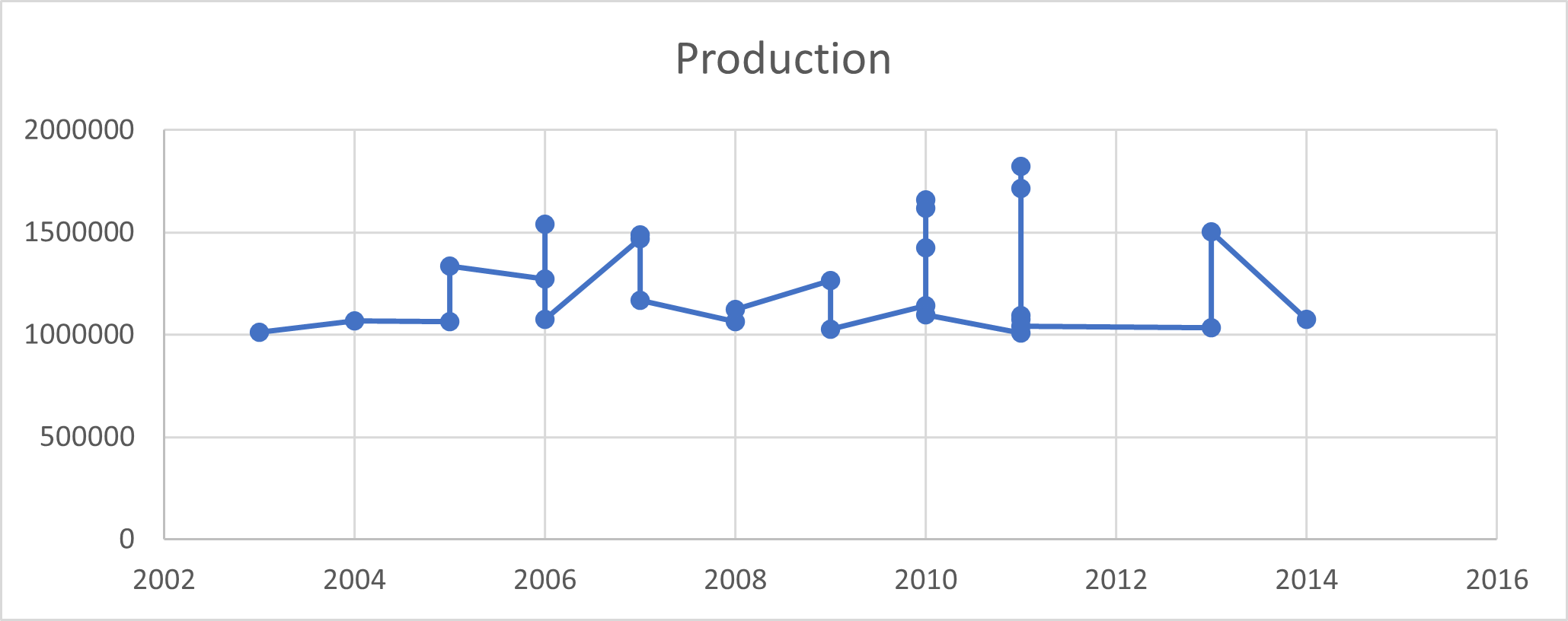
Fig 1 Cotton crop Production in Kharif season
Agriculture, fishing, and forestry are liable for 49% of the work. It includes 16% of GDP and gross worth value of up to 17.7 lakh crores in the Indian economy. Improper farming can hold back the economy and cause distress to farmers.
The horticultural chain incorporates all cycles from the provider, cultivating, preparing, circulation, retail, and purchaser.
AI can be utilized in the Agriculture Industry in certain territories like Supplier Management, SMART Farming, Autonomous Transportation, and SMART Retail.
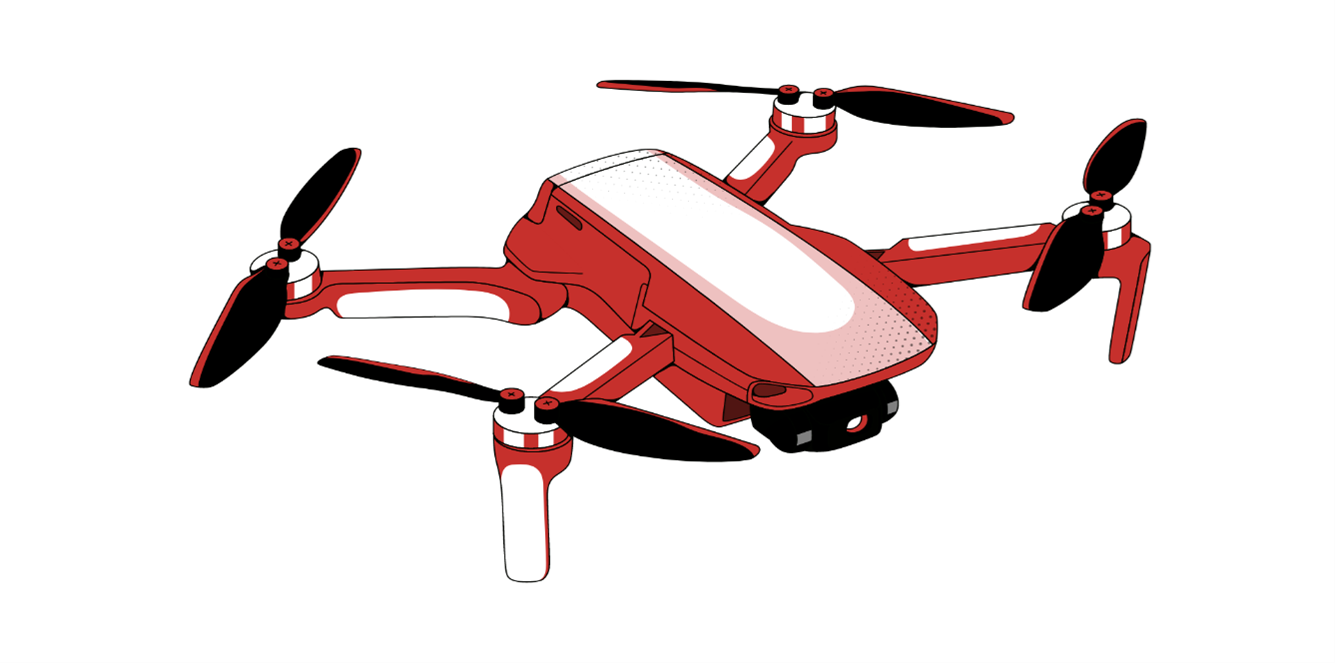
Fig 2 Illustration image of Drone (Image source Canva)
By understanding weather conditions, temperature, water usage, and soil, AI assists farmers in making better decisions to grow and yield productive crops. Accuracy horticulture is a term for using artificial intelligence frameworks to help improve harvest quality and precision. Accuracy agribusiness uses artificial intelligence (AI) to aid in the detection of plant diseases, irritations, and helpless plant nutrition on ranches. Simulated intelligence sensors can detect and target weeds, then decide which pesticides to use in the appropriate cushion zone. It prevents the overuse of pesticides and other harmful substances from making their way into our food.
Farmers use AI to create sporadic forecasting models to increase horticultural precision and efficiency. These models can predict future climatic designs for a long time, allowing small farmers to make better decisions. Because information is limited in non-industrial countries, occasional anticipating is especially important for small farms. Because small farmers produce 70% of the world’s harvests, keeping these smaller homesteads operating and developing small yields is critical.
Drone Applications in Agriculture
• Seed Planting.
• Soil and Field Analysis
• Harvest Spraying and Spot Spraying.
• Harvest Mapping and Surveying.
• Water system Monitoring and Management.
• Ongoing Livestock Monitoring.
Blockchain and AI
A blockchain comprises squares, each square containing the information (anything of significant worth), its hash esteem (a special cryptographic containing characters and numbers produced through a complex computational calculation), and a pointer to the hash of the past square.
Nonetheless, the farming industry is a less exciting segment where the Blockchain can provide significant benefits. Farming is one of the most important foundations for people’s long-term survival, is critical to perform effectively in creation and efficiency. The use in the horticulture industry can provide several benefits to both ranchers and end customers. While manufacturers will benefit from increased profitability, consumers will have access to all the information necessary to make an informed purchase. When combined with IoT devices and AI, Blockchain innovations may do wonders for the farming sector.
With expanded globalization and extraordinary rivalry in the market, food flexibility chains have become longer and more perplexing than at any other time. There are some issues in food flexible chains, for example, food discernibility, sanitation and quality, food trust, and gracefully chain failure, which include extra dangers to the whole society, economy, and the wellbeing of humanity.
These would make it difficult for providers of deception and low-quality goods to stay in business and encourage all providers to improve the quality of their products across the whole farming and food industries. The Blockchain makes reliable information about how food is transported and is available. It alleviates buyer concerns about food safety, quality, and natural friendliness. It helps better understand between customers and manufacturers. It supports customers by removing barriers to product trade to repair their relationship. From the perspective of administrative offices, it makes precise data available for making educated and competent decisions.
Information and Communication Technology (ICT)
Information and Communication Technology (ICT) is also known as E- agriculture. Its main work is to promote and enhance agriculture in rural areas. ICT incorporates gadgets, organizations, mobiles, administrations, and applications; these reach from creative Internet-period advancements and sensors to other previous guides, for example, mobile phones, TVs, radios, and satellites. Guidelines, standards, and instruments uphold the main parts of e-agribusiness.
Does ICT build a gap between the farmers of different geographical areas?
It can be able to do by providing education, building ICT infrastructure that enables the flow of information from academics, researchers, scientists to the rural and illiterate people to the advantage so that they neglect to characterize the standards and hypotheses needed to oversee them effectively.
Always great efforts are needed, which are not well-coordinated, and synchronized.
Pest Management
Cotton is one of the third-largest crops in India after rice and wheat, 75% of it by small farmers who battle with vulnerability in production and pay. One of the main difficulties they face is the failure to oversee bothers regardless of the weighty utilization of pesticides.
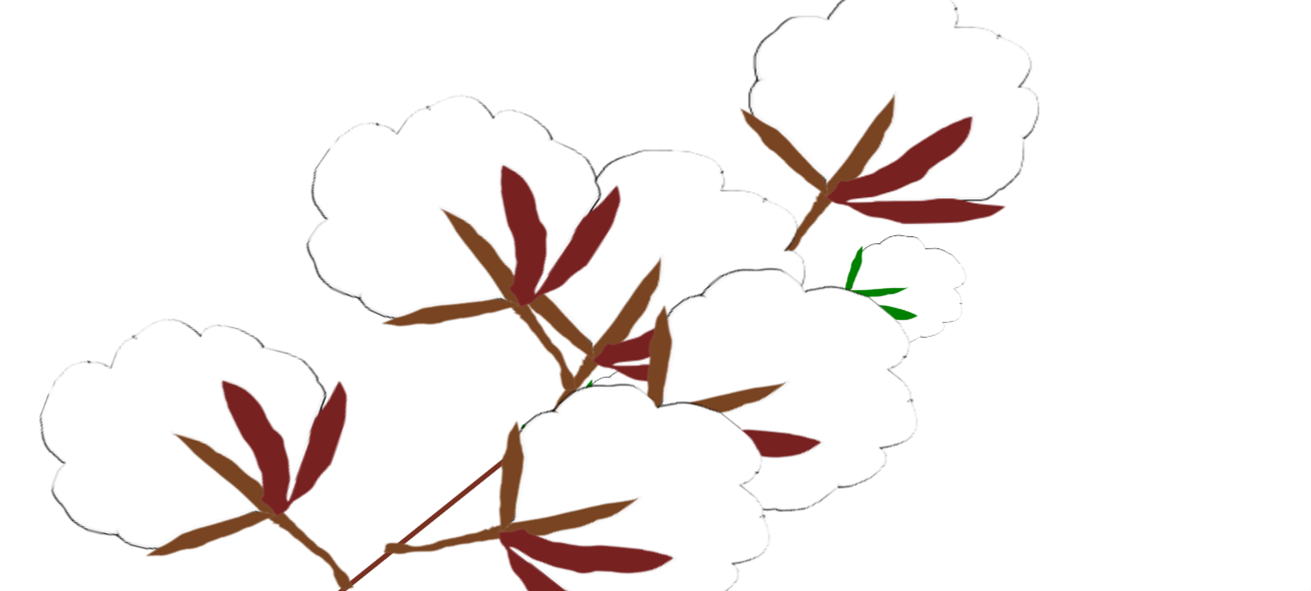
Fig 3 Illustration image of cotton
More than a billion small farmers live around the world and a significant number of these farmers battle with avoidable nuisance harm that can crash up to half of the yearly harvest yield. In India, for the 30 million individuals, about 6 million farmers and their families rely upon cotton cultivating professionally, and one of the main challenges faced in cotton growth is pest management (Raise 2020).
Wadhwani AI, along with the support of the Government of Maharashtra, and Telangana has developed an algorithm that detects two pests of cotton. It will minimize the loss of crops.
Artificial Intelligence will help to recognize and evaluate pests trapped outfitted with sensors. These sensors will associate with an onboard electronic framework, and the information will travel to a web, where bugs will be checked out and distinguished.
This type of information is then introduced in a ready-made report using a cell phone or tablet.
It will help the farmers decide if agrochemical ought to be taken or not.
Challenges
1. Inaccurate weather prediction.
2. How much water is to pour into crops?
3. Water Crisis
4. Weather Forecasting
Current climate forecasting relies on a data collection organization. While integrating high-resolution far-flung sensors lays the groundwork for more precise and accurate climate forecasting, it also challenges how to measure, analyse, and maximize such data most effectively to the test.
Traditionally, climate prediction has revolved around large, powerful mathematical models that focus on more exact predictions. However, due to climate change’s vulnerability and several model flaws, such as similarity inside directions, this technique may fail to match the requirements of many use cases.
Since the 1980s, when neural organizations first arose, artificial intelligence has been used in climate forecasting. Meteorologists are now using the technology in satellite data preparation, nowcasting, tropical storm and extreme climate forecasting, and other economic and ecological research fields.
Soil Resistance
Artificial Neural Networks (ANN) and Support Vector Machines (SVM) models estimate soil resistance.
The model made by AI (ANN and SVM) is productive and has a limit better than the Busscher model.
Under information states of soils with textural classes and extraordinary and comparative administrations, even with better list esteems presented to a similar administration. [6]
Water Management
A water crisis is a global problem. Billions of gallons of water per day get wasted. In the United States, seven billion gallons of water per day get wasted.
Developing countries face more problems because of financial conditions, but thankful to AI techniques that use ANN and SVM models are less expensive.
Food supply needs to increase to feed 9.7 billion people in 2050. The problem is island and water resources are declining, the population is growing, and one-third of food goes to waste.
App made for Farmers needs
An agriculture app is there. One of these App is called Plantix and has the following features as mentioned below:
1. It can recognize more than 500 images of plant disease and lack of nutrients.
2. Early disease alert is detected if you are at risk of that area.
3. It provides you with information on products and solutions. It also helps to prevent the next attack.
4. It provides you with all information to try out new things.
There are other few top Apps for agriculture, and some of them are-
1. Sirrus
2. Farm Logs
3. Grower Edge
4. Farm features
5. Ross
Indian language content shared on the internet in different languages is much low approx. 0. 0015% whereas English contents are 54%. All the learning lectures or books are in the English language. A need is there to be in different Indian languages.
Two methods for creating content mainly are
1) Voluntary method
2) Paid method
Knowledge, time, and precision are some of the features needed to solve the challenges and problems faced by local people. The use of new technology as AI to change the life of a farmer in a better way. It should be accessible, affordable, achievable, and sustainable.
The touchscreen interface is a natural user interface that allows doing the work by tapping your fingers. For example, to print, open a file in written or spoken language instead of computer language.
Time Series Analysis
Time Series Forecasting in terms of future predictions can predict the future using time series analysis. ARIMA is the best model as it is easy to utilize. More on the ARIMA model can be learned by following the blog Introduction to Time Series and Forecasting by ARIMA Model. – (analyticsvidhya.com).
import warnings # `do not disturbe` mode
warnings.filterwarnings('ignore')
import numpy as np # vectors and matrices
import pandas as pd # tables and data manipulations
import matplotlib.pyplot as plt # plots
import seaborn as sns # more plots
from dateutil.relativedelta import relativedelta # working with dates with style
from scipy.optimize import minimize # for function minimization
import statsmodels.formula.api as smf # statistics and econometrics
import statsmodels.tsa.api as smt
import statsmodels.api as sm
import scipy.stats as scs
from itertools import product # some useful functions
from tqdm import tqdm_notebook
%matplotlib inline
# Time series data
import matplotlib.pyplot as plt
df = pd.read_csv('Cereals.csv',
parse_dates=['Year'], index_col='Year')
# Draw Plot
def plot_df(df, x, y, title="", xlabel='Year',
ylabel='Yield', dpi=100):
plt.figure(figsize=(16,5), dpi=dpi)
plt.plot(x, y, color='tab:red')
plt.gca().set(title=title, xlabel=xlabel, ylabel=ylabel)
plt.show()
plot_df(df, x=df.index,
y=df.Yield, title='Time Series Analysis of Cereals.')
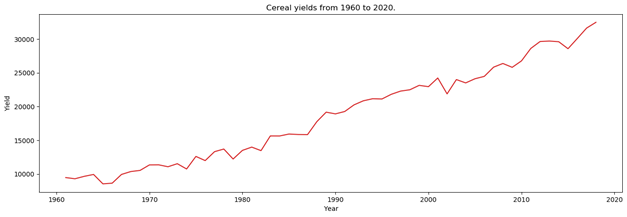
Fig 4 Cereal yields from 1960-2020.
returns = pd.DataFrame(np.diff(np.log(df['Yield'].values)))
returns.index = data.index.values[1:data.index.values.shape[0]]
returns.columns = ["Yields"]
returns.head()
import pyflux as pf
arm_model = pf.ARIMA(data=returns, ar=4, ma=4, target='Yields', family = pf.Normal())
arm = arm_model.fit("MLE")
arm.summary()
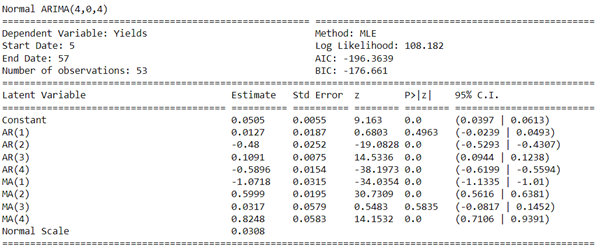
arm_model.plot_fit(figsize=(15,8))
arm_model.plot_predict(h=20,past_values=50,figsize=(15,5))

ARIMA model for the prediction of Cereal yields.
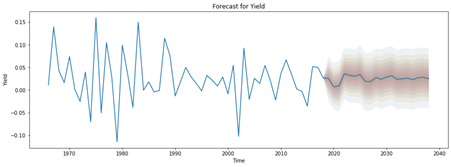
Fig 5 ARIMA model for prediction
The production shows to be of the same level despite double population.
import matplotlib.pyplot as plt
df = pd.read_csv('Rapeseed.csv', parse_dates=['Year'], index_col='Year')
# Draw Plot
def plot_df(df, x, y, title="", xlabel='Year', ylabel='Yield', dpi=100):
plt.figure(figsize=(16,5), dpi=dpi)
plt.plot(x, y, color='tab:red')
plt.gca().set(title=title, xlabel=xlabel, ylabel=ylabel)
plt.show()
plot_df(df, x=df.index, y=df.Yield, title='Rapeseed.')
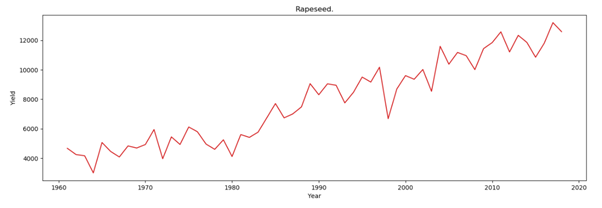
Fig 6 Rapeseed crops from 1961 to 2018
returns = pd.DataFrame(np.diff(np.log(df['Yield'].values)))
returns.index = data.index.values[1:data.index.values.shape[0]]
returns.columns = ["Yields"]
returns.head()
import pyflux as pf
pf.acf_plot(returns.values.T[0])
arm_model = pf.ARIMA(data=returns, ar=4, ma=4, target='Yields', family = pf.Normal())
arm = arm_model.fit("MLE")
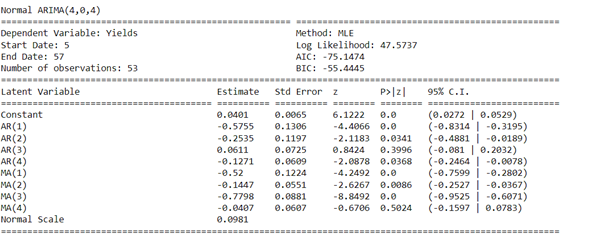
arm.summary()
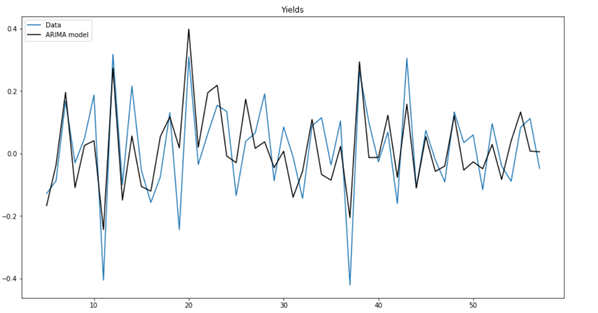
arm_model.plot_fit(figsize=(15,8))
arm_model.plot_predict(h=20,past_values=50,figsize=(15,5))
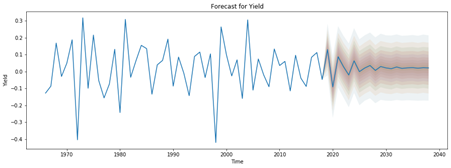
Fig 7 ARIMA prediction for Oil Crops Rapeseed.
Predictions resulted in same level of yields with no increase and decrease.
import matplotlib.pyplot as plt
df = pd.read_csv('Population1.csv', parse_dates=['Year'], index_col='Year')
# Draw Plot
def plot_df(df, x, y, title="", xlabel='Year', ylabel='Population', dpi=100):
plt.figure(figsize=(16,5), dpi=dpi)
plt.plot(x, y, color='tab:red')
plt.gca().set(title=title, xlabel=xlabel, ylabel=ylabel)
plt.show()
plot_df(df, x=df.index, y=df.Population, title='Population of India.')
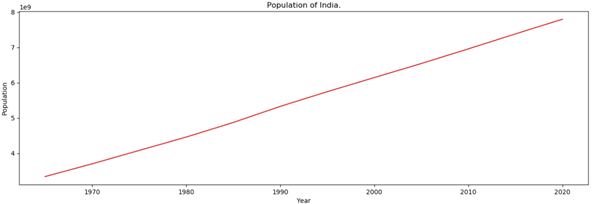
Fig 8 Population of India increased from 1960 to 2020.
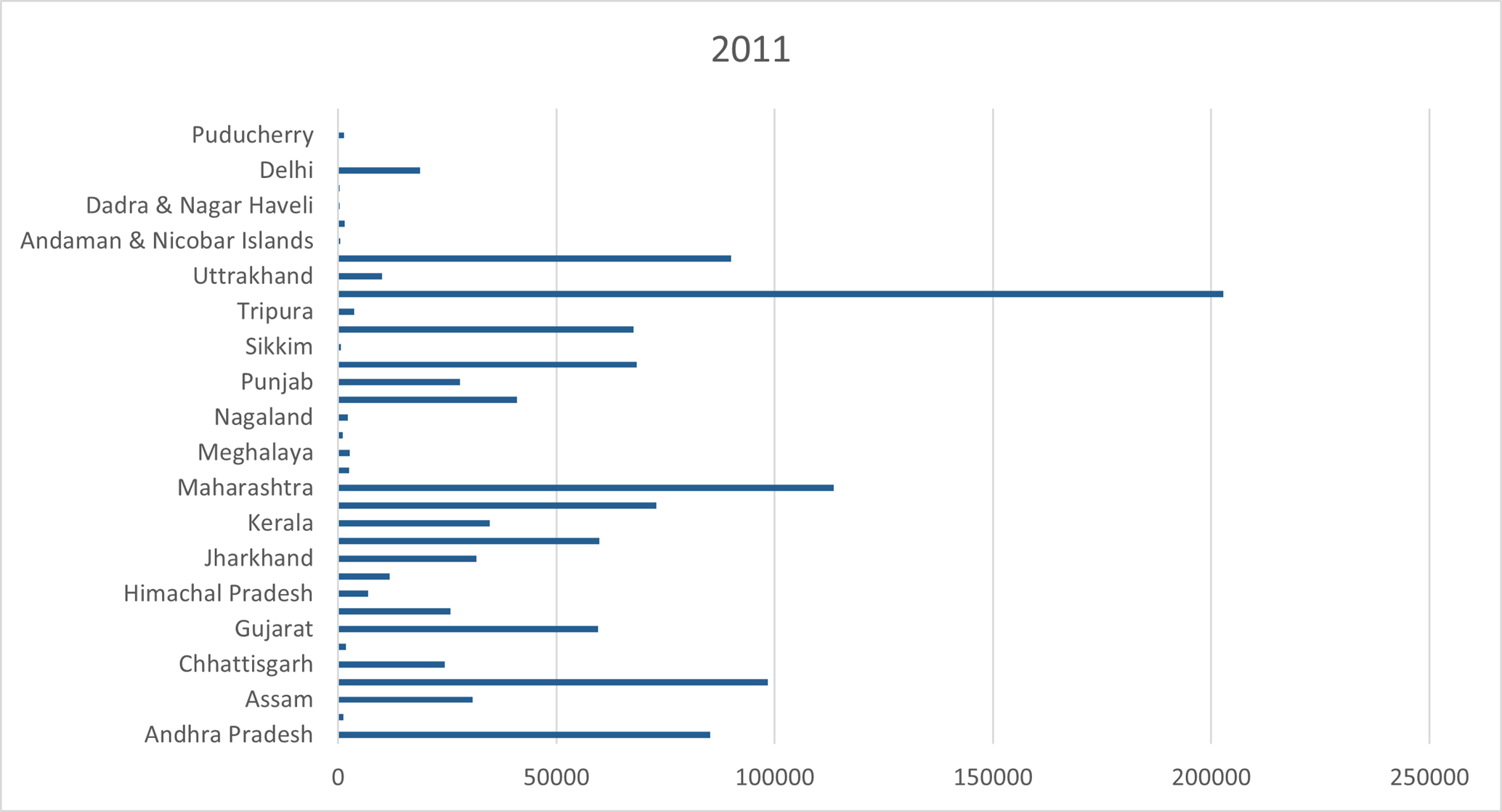
Fig 9 Population of different States in 2011
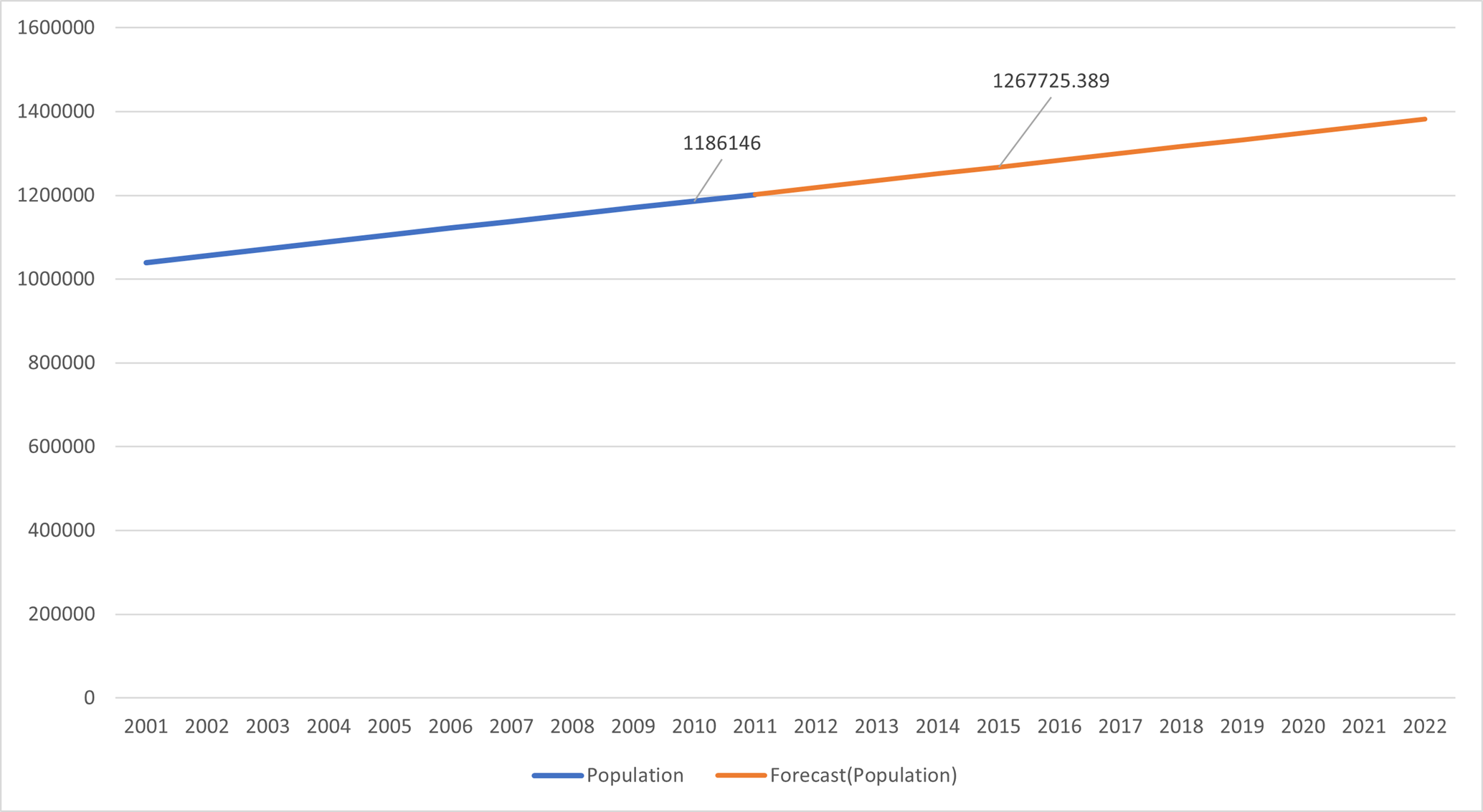
Fig 10 Forecast of Population.
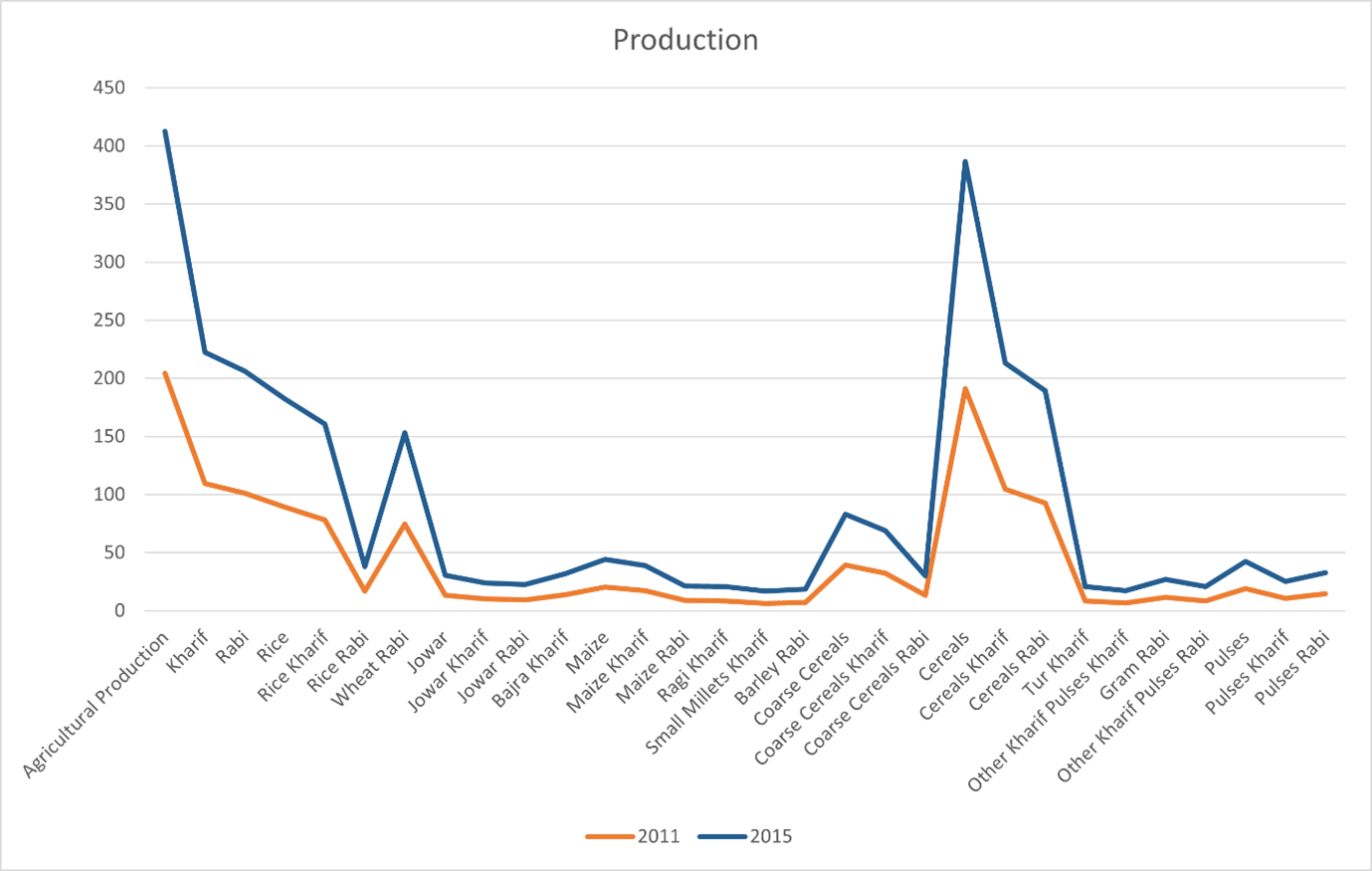
Fig 11 Production of different food grains in India.
We can see from the graph the Production of various food grains from the year 2005 and year 2011 has not much difference.
import matplotlib.pyplot as plt
df = pd.read_csv('Bean.csv', parse_dates=['Year'], index_col='Year')
# Draw Plot
def plot_df(df, x, y, title="", xlabel='Year', ylabel='Yield', dpi=100):
plt.figure(figsize=(16,5), dpi=dpi)
plt.plot(x, y, color='tab:red')
plt.gca().set(title=title, xlabel=xlabel, ylabel=ylabel)
plt.show()
plot_df(df, x=df.index, y=df.Yield, title='Yield')
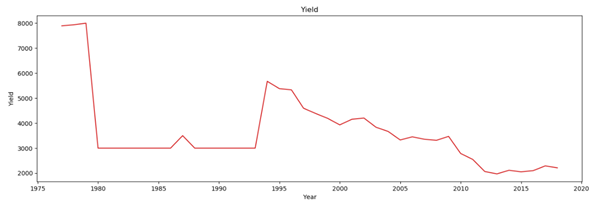
Fig 12 Bean Production from 1977 to 2018
Survey Results
Few Polls done by attendees on session in Raise 2020 shows the users response below-
Do Fungus infections be solved by AI?
• Majority of 69.1% replied can be solved faster economically, 18.05% slower, costly, and 8.0% responded no.
Can AI be used for healing mental health problems in farmers and youth?
• 50% of the users believe it can heal.
Why does a need to be careful with AI?
• 55% of users believe that some of them can use AI in the wrong way.
Do AI is the best tool in new technologies?
• 63% believe yes, 23 % might be, and 13% think no.
Can AI help farmers with which crop will get more demand in the future?
• 81% Yes, 12% Maybe, and 3% No.
Discussion
The whole world is heading towards an emergency. The human population will be raised to nine billion and demand more food production. Urbanization and global warming are obstacles to growing crops. It is the beginning of AI, not the end.
Google’s search results, Facebook’s friend recommendations, Amazon’s purchase recommendations, and a slew of other services must be scratching their heads, wondering where it came from or if it even exists. AI that ingests and breaks down large volumes of data to find common patterns and translate those examples into forecasts and activities is the driving force behind these advances.
Indian agriculture from 1960 to 2020 almost 60 yrs. have changed a lot shown in Figures 4 and 6. Production of cereals, Tomatoes have been increased 40 times, Potatoes approx., 14 times more, wheat eight times; however cocoa bean production has decreased.
India is multi-lingual, and a large portion of the farmers/provincial individuals are uneducated enough, poor connectivity of the internet to is there, how they will be able to utilize AI in their daily life?
The training, known as “Precision Farming,” utilizes constant and recorded information alongside AI calculations. For example, rather than applying a lot of pesticide to a zone, you’ll have the option to more modest adds up to explicit trees, brambles, or even leaves, decreasing the expenses and waste while evading harm that the compound substance can cause when applied in mass.
How has Panchang coordinated climate expectation?
The question asked in Raise 2020. It is truly essential to consider insight information.
Peanut and castor are the main crops in the Junagadh district but will only prosper with the heavy monsoon. However, farmers must decide in April and May what to sow and wait for the results. How much rain will fall, and when it is anxiety in every farmer all over India.
Somewhat stress is reduced depending on rain by irrigation and spreading of the canal. But still, monsoon rain proves to be critical. To further reduce the stress, some farmers have shifted to traditional prediction based on scientific knowledge and some non-scientific.
P R Kanani, an assistant professor at Gujarat Agriculture University (GUA), started collecting the data based on traditional beliefs. He found a book on Bhadli whose concept came true in 1990 when there was a delay in monsoon but according to the director of meteorology was a normal monsoon.
Since 1996, Kanani has been gathering information on the blossoming season of the Indian laburnum (Cassia fistula) tree. It is near the road in Saurashtra. Cassia fistula’s connection to the storm was archived ahead of schedule in the eighth century in the Brahad Samhita by the great thinker Varahmihar.
The storm starts 45 days after the tree’s blossoming top. “We gather information from the trees all over the grounds. There’s a dispersion of blossoming dates – we attempt to get a normal incentive for the trees,” says Kanani.
Conclusion
In the upcoming years, the World population will be double, and the struggle to make the production double of food is a challenge and can be overcome with the help of AI techniques.
The production of some crop’s predictions did not show an increase in production. It either is going down, or no change and the population will be double in 2050.
Some apps bridge the gap between English and other languages with AI. In India, 90% of the population is below ten lakhs, and these apps will prove a blessing to such people.
Crops grown can be increased and have better quality if the education reaches all the farmers, and AI is the best medium to overcome all the issues farmers face.





